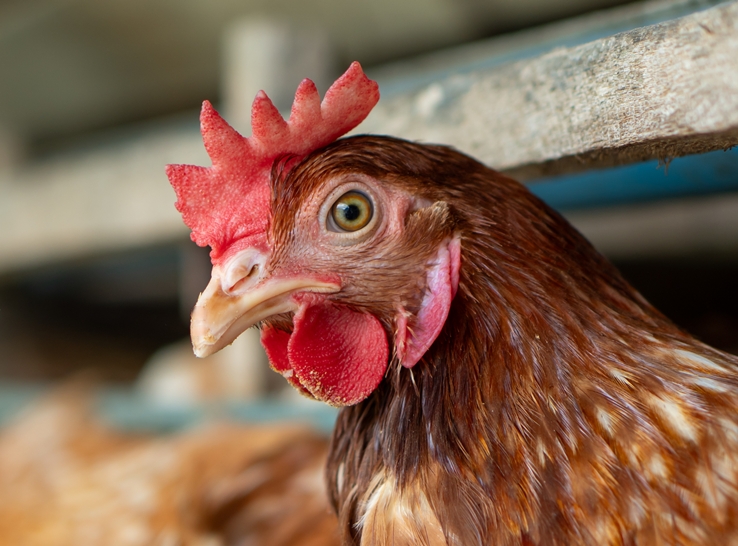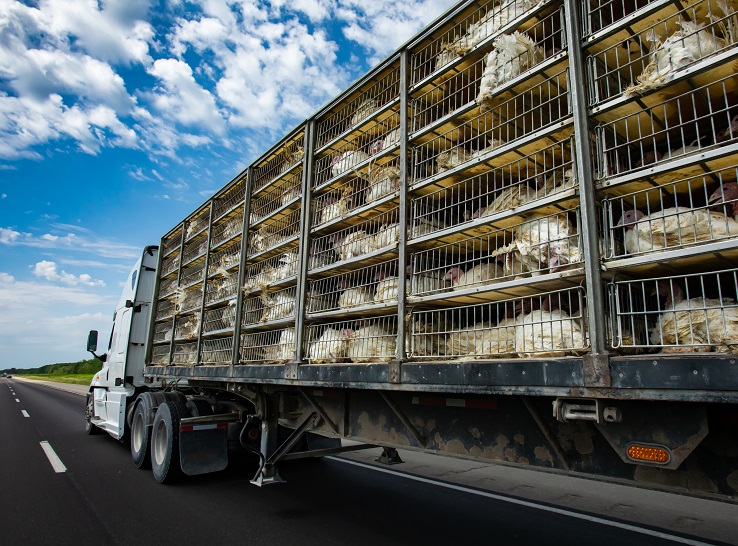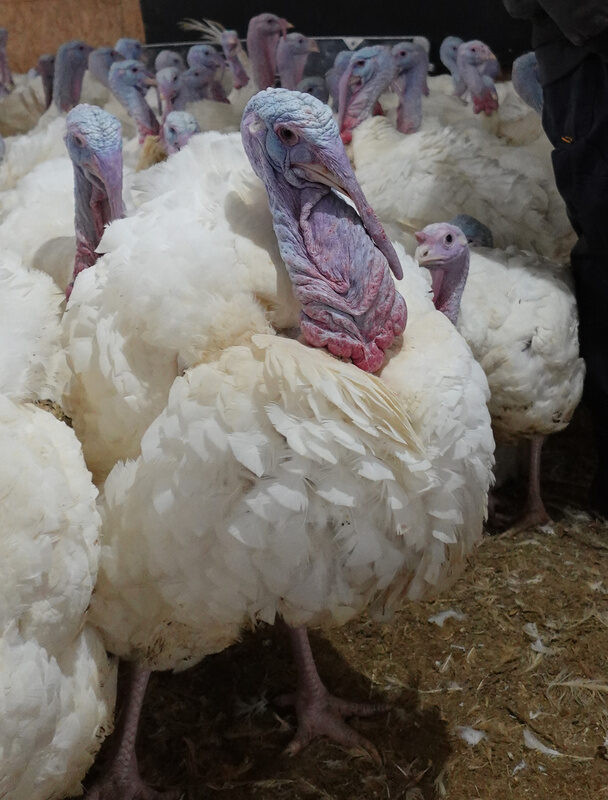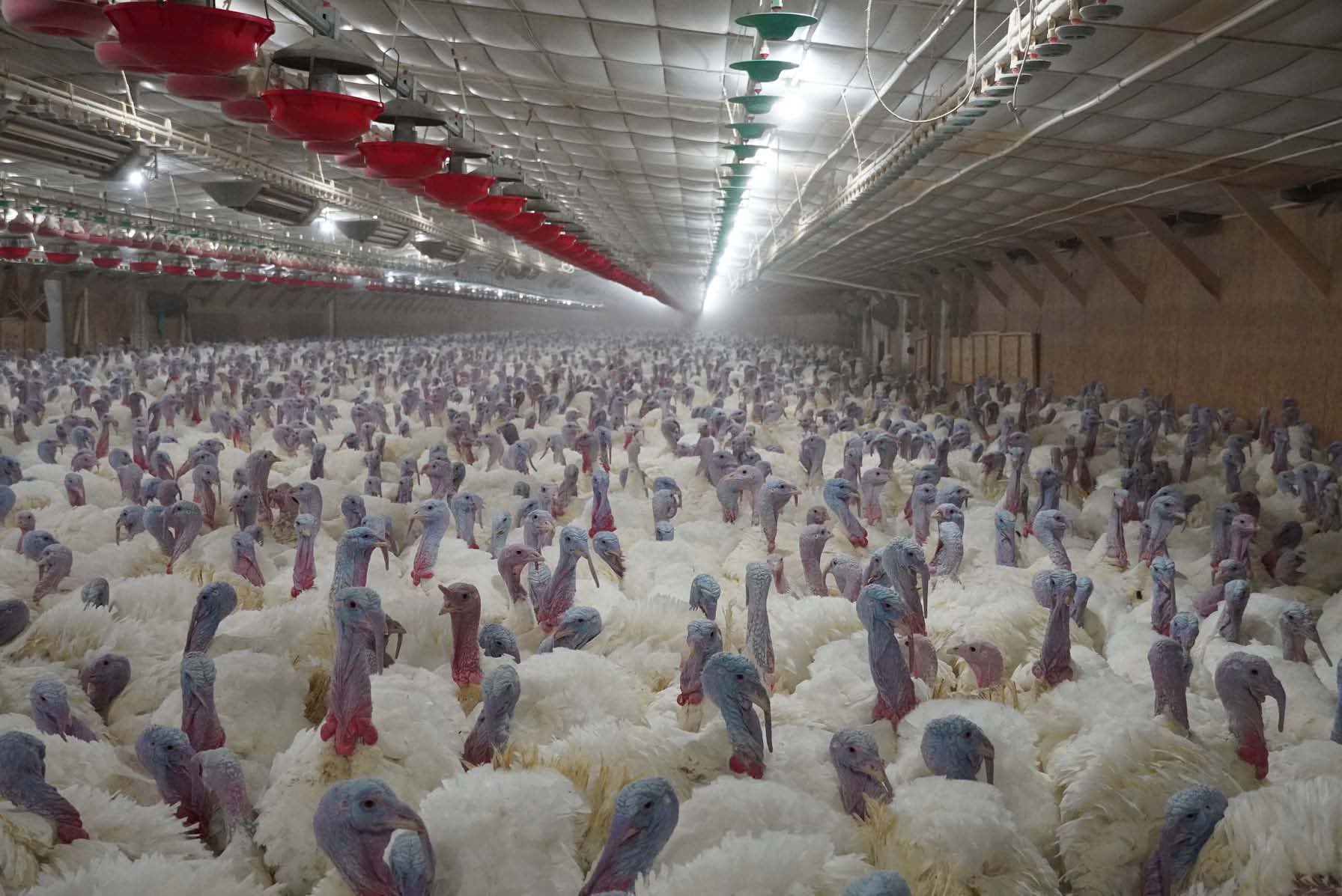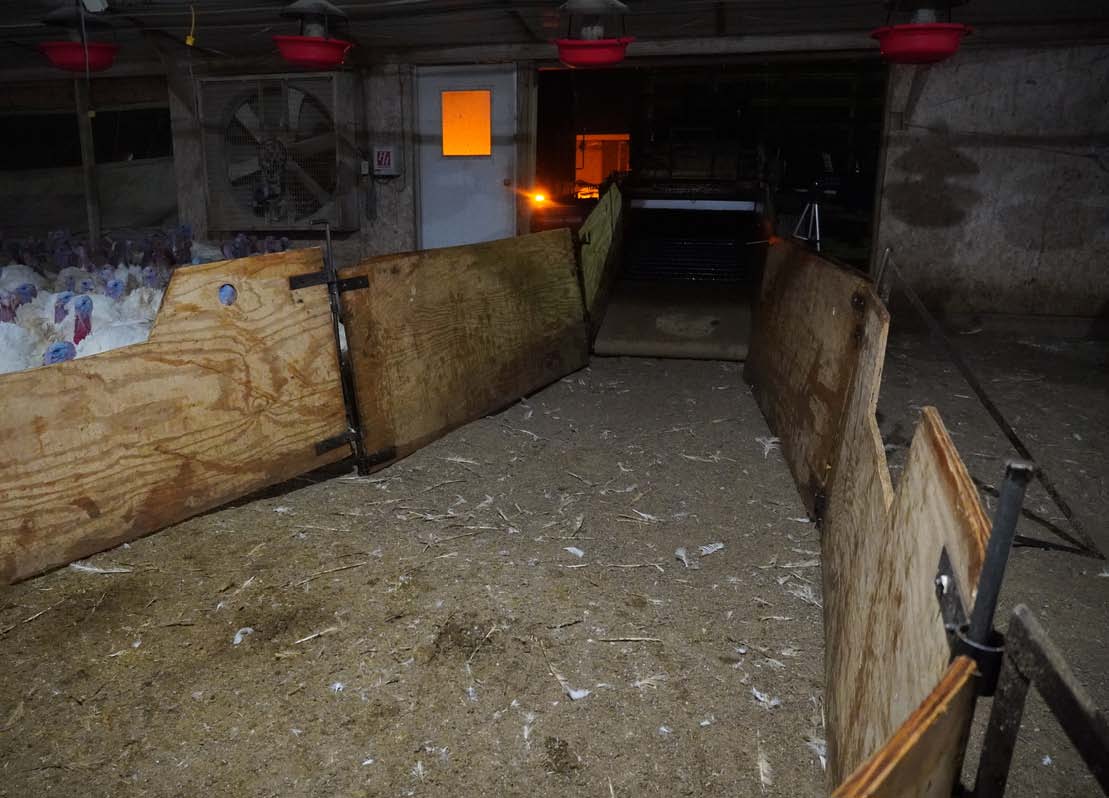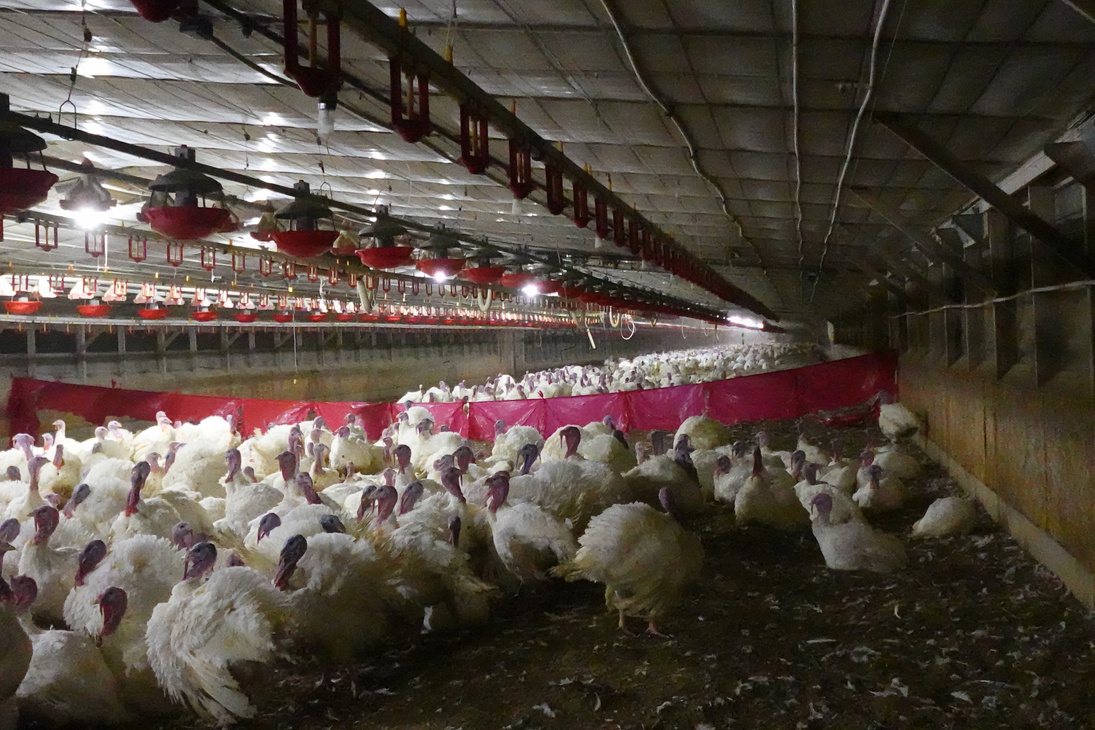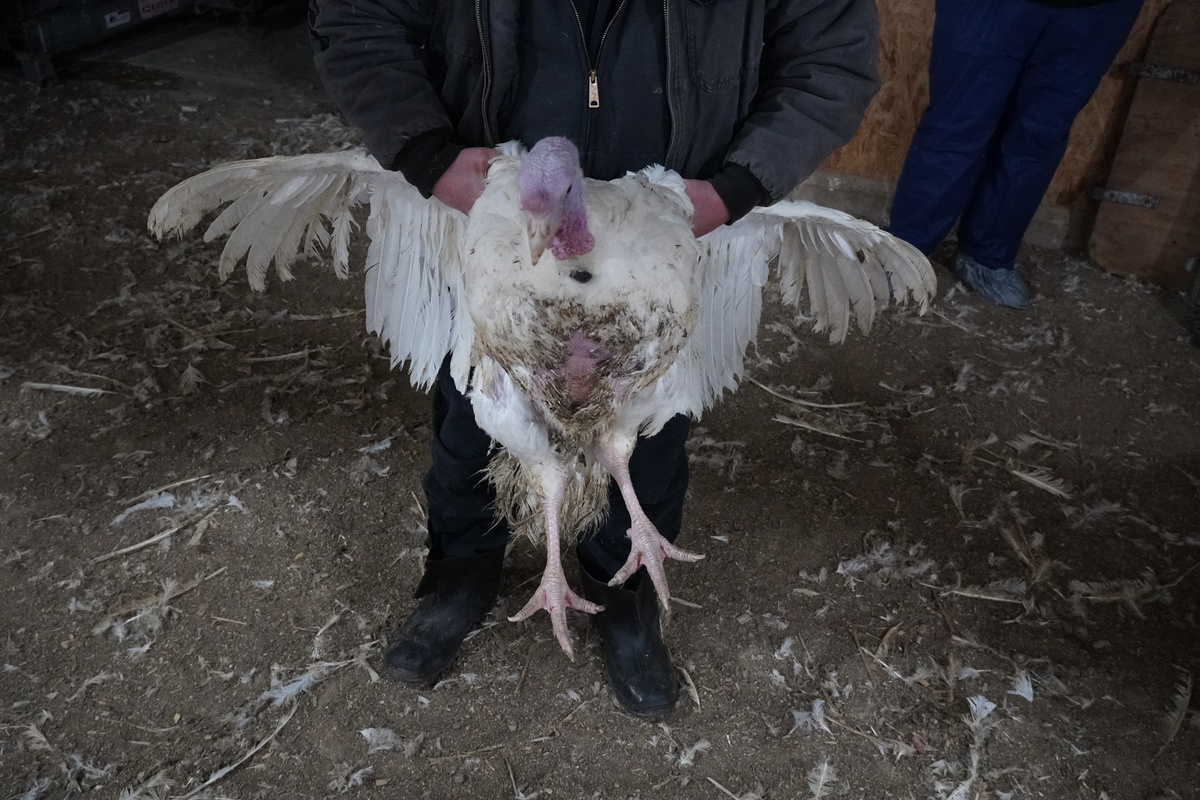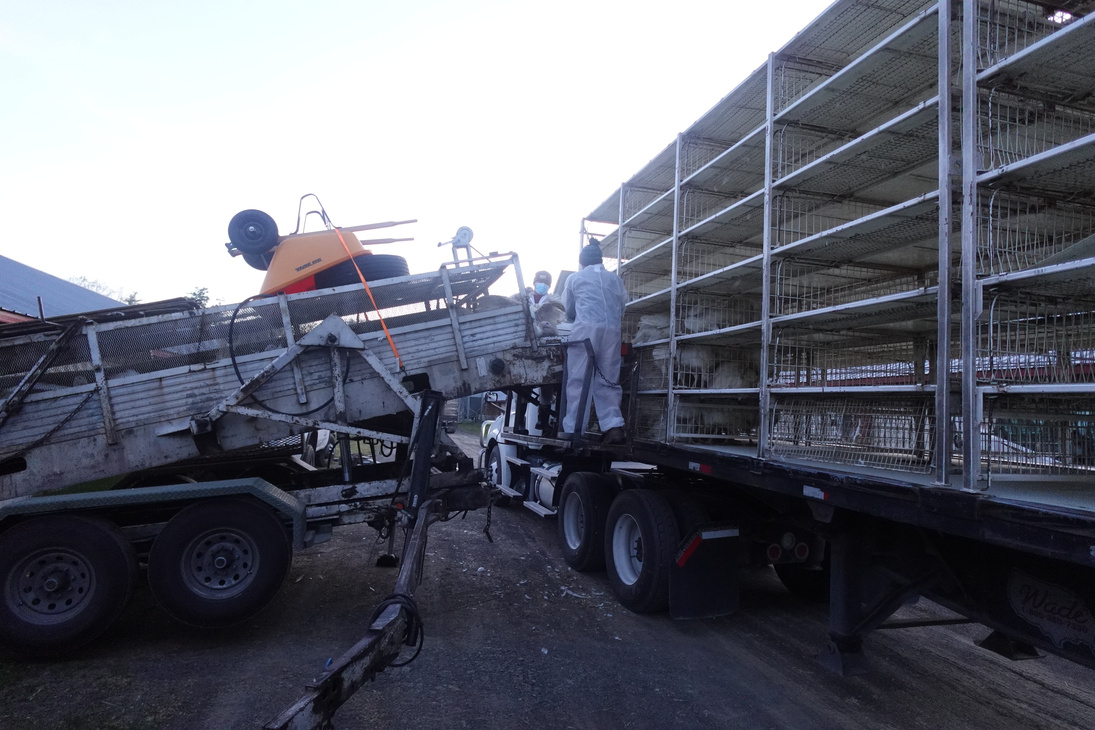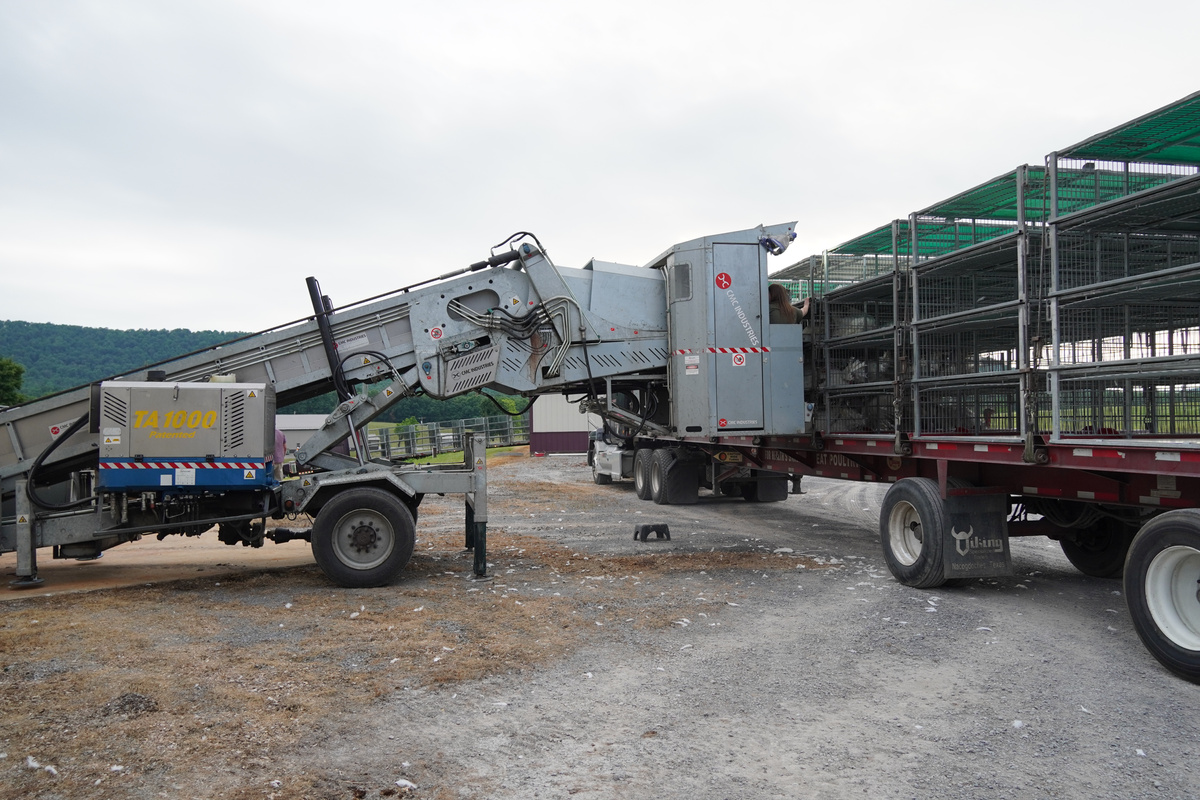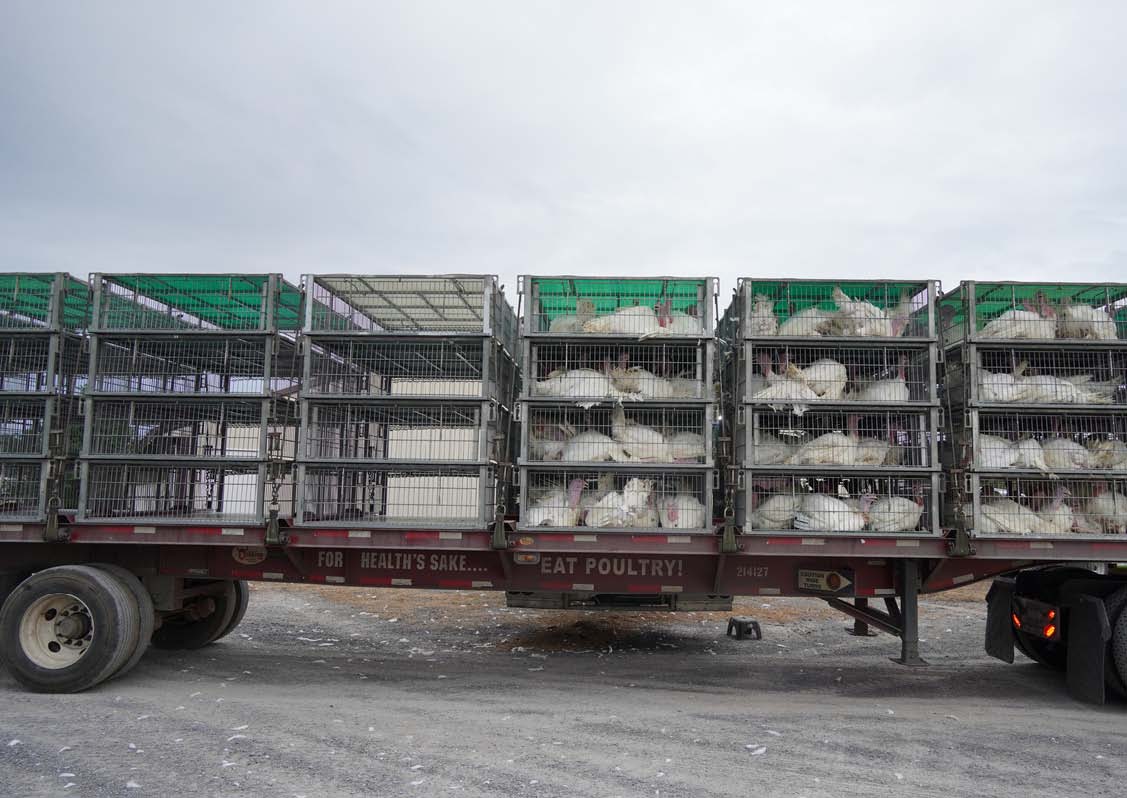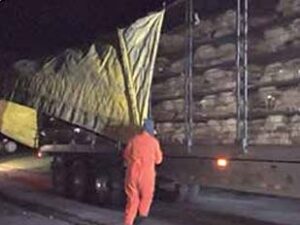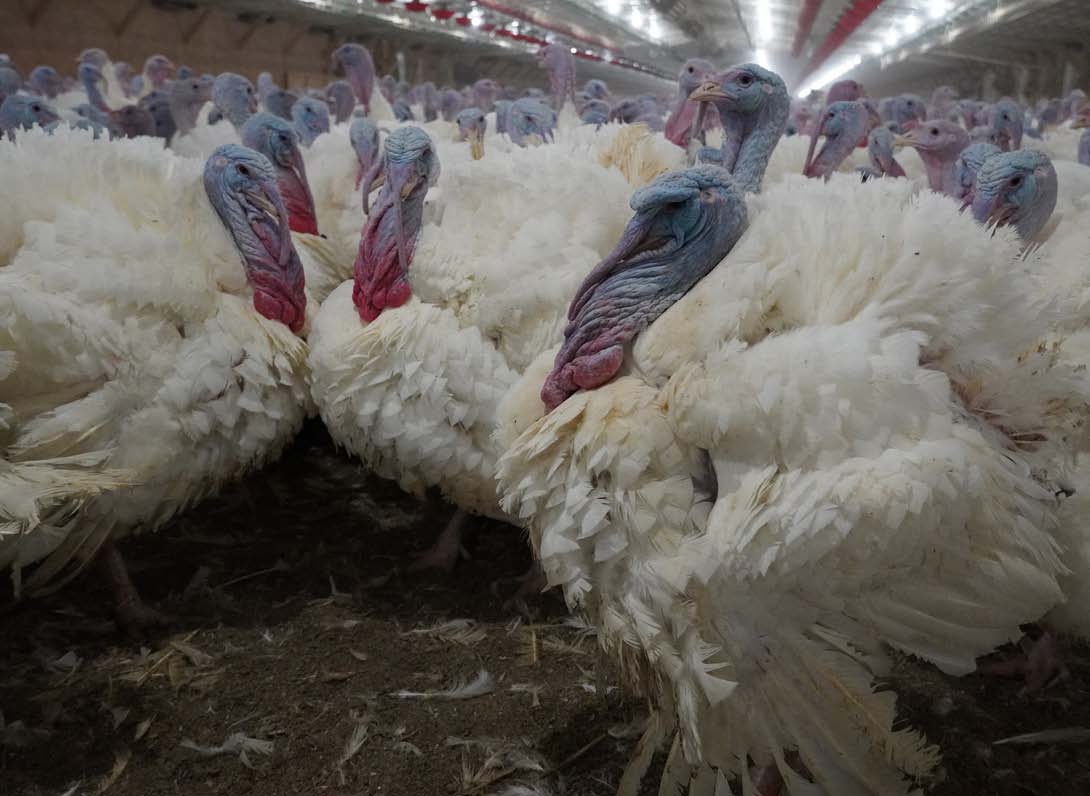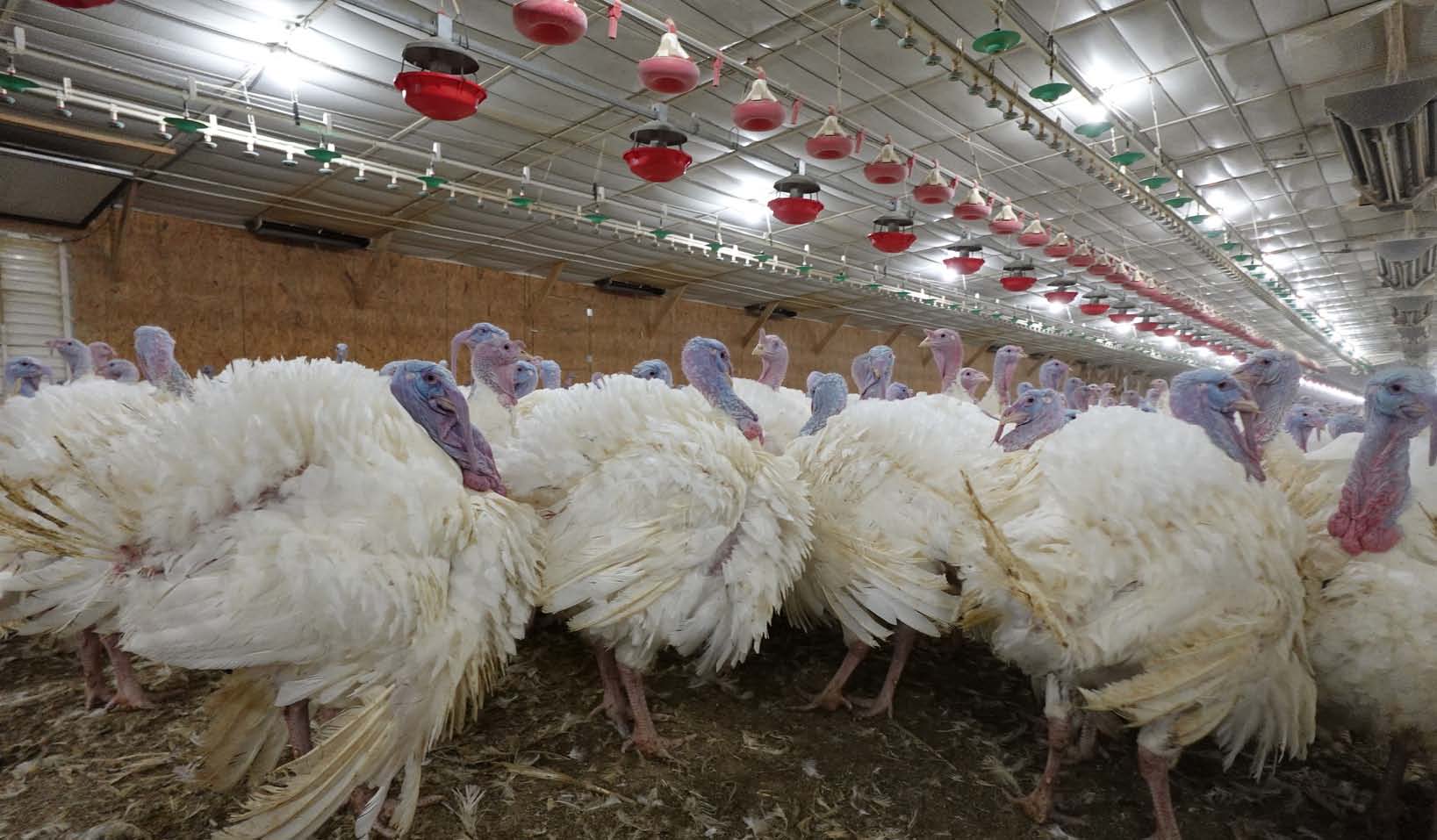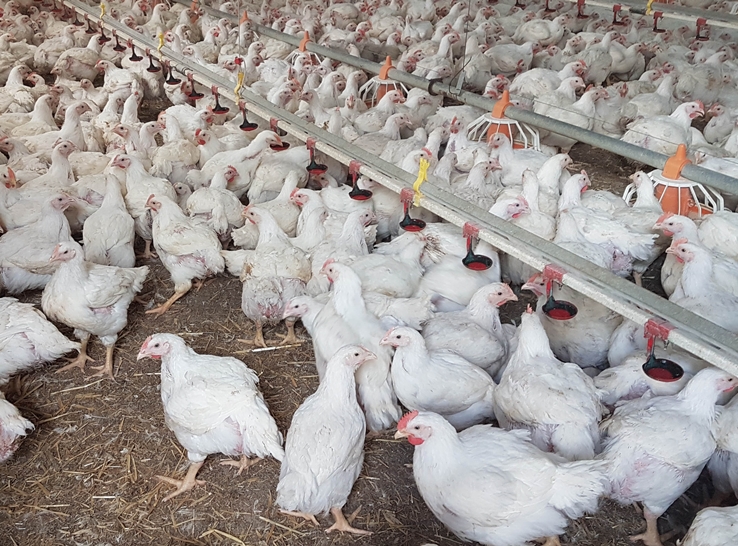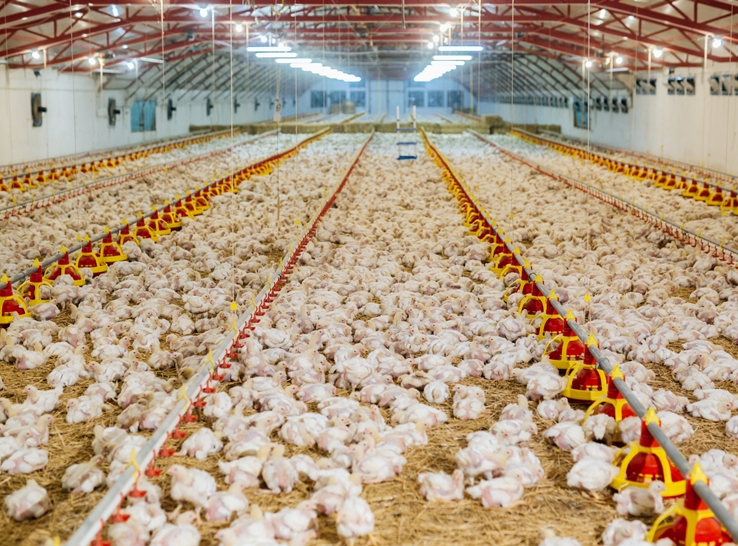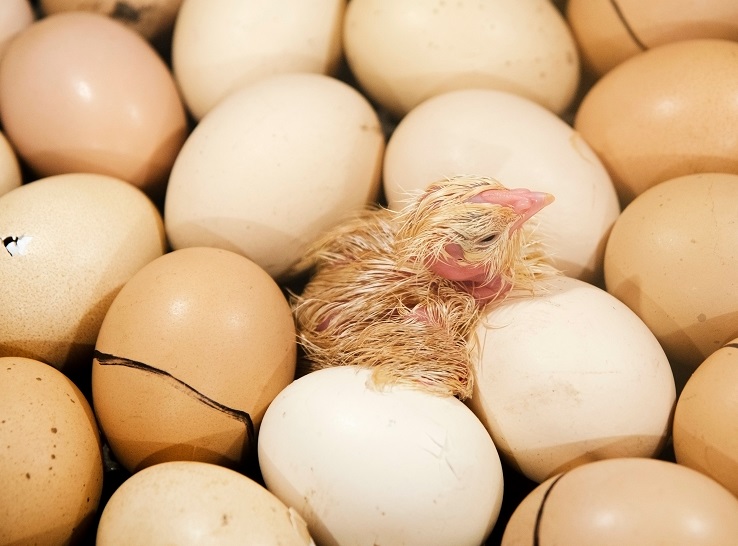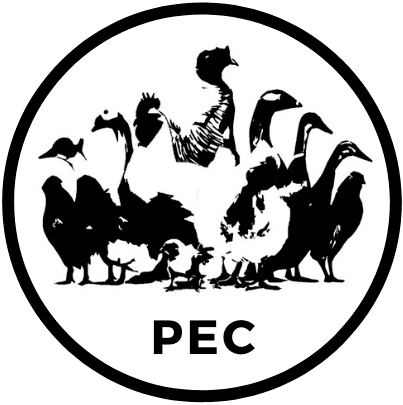By Allison Pullin, PhD, and L. Anyela Hernandez, DVM, North Carolina State University
What is live haul?
Turkeys are typically raised for 10 to 20 weeks, depending on bird sex, size and product criteria for markets. Once the market weight is achieved, turkeys are herded, loaded, and transported to slaughter plants for stunning and processing.
These events of herding, loading, and transporting turkeys are commonly referred to as “load out” or “live haul” (henceforth referred to as live haul). There are a variety of factors that can pose risks to animal welfare throughout the live haul process. This article reviews the steps for live haul and the factors contributing to animal welfare risks.
Preparing the environment
The live haul crew, typically consisting of six to eight members, assesses the farm upon arrival to ensure that feeders, drinkers, and other obstacles (e.g., environmental enrichment) have been raised or removed to allow for smooth bird movement.
Crew members then identify the loadout doors, set up the loader conveyor belt, and build a funnel-shaped structure to guide small groups of turkeys toward the conveyor belt.
Creating the right live-haul environment requires careful lighting management with a balanced light intensity. Turkeys need to be active to be herded effectively toward the conveyor belt. Low light intensity reduces their mobility, while high light intensity can overstimulate them, making them overly active and flighty, complicating herding.
Once turkeys are on the conveyor belt, lowlight intensity is crucial to keep them calm as they are placed onto the truck.
Extreme temperatures and sudden temperature fluctuations significantly influence turkeys ‘mobility, whether inside or outside the barn. With thermoneutral zone ranges of 55⁰F to 75⁰F,deviations from this range, such as excessive heat or cold temperatures, cause thermal stress, reducing bird movement [1,2]. Consequently, crews adjust loading schedules to wait for favorable weather conditions to facilitate herding. Strong winds can disrupt mobility and complicate handling as birds balk at drafts, but using tarps around the barn door can block drafts to ensure smoother loading processes.
Herding turkeys: inside the barn
Once the equipment is set up, crew members will create flag lines to divide the flock into smaller groups. Crew members then “cut” a small group of approximately 50turkeys from the section to start heading towards the funnel. During herding, crew members use tools such as plastic bags or flag sticks in the appropriate area of the birds’ flight zone (birds’ distance from unfamiliar people) to move the group forward. Once in the funnel, birds may be divided into even smaller groups of approximately 10 to 20 birds by additional crew members to guide them through the narrowing funnel and finally move them onto the loader conveyor belt. If a bird does not herd, crew members must use two points of contact to safely pick up and carry the turkey to the conveyor belt. Turkeys can be carried by holding both shoulders (at the joint of the wing and the body), a leg and a shoulder, or both legs.
Loading turkeys: outside the barn
After reaching the loader, turkeys are moved onto a slightly inclined conveyor belt with an adjustable height to match the height of the coops. The 8.5 to 10.5 m long belt moves the birds to be placed manually or automatically into the transport coops. Birds should be loaded into the coops in an upright position. If they are upside down on their back, there is a significant mortality risk during transport. While manual loaders are commonly used, automatic loaders are recognized for reducing labor demands and simplifying truck maneuvering.
Manual loading: A crew member handles birds individually by using two points of contact, typically at the base of the back of the neck and underneath the tail or thigh, to guide them into the coop.
Automatic loading: A conveyor belt extends directly into the coops, transporting the birds inside automatically. The conveyor belt controls are operated by a crew member.
Coop conditions
Before beginning the loading process, crew members must know the number of birds to place per coop, which depends on bird size, weight, and weather conditions. They must also inspect each coop for potential hazards, such as broken wires. Damaged coops should be tagged and left empty. Once the appropriate number of birds is loaded, crew members ensure the coop doors are fully closed to keep the turkeys safely confined during transport.
Transport and lairage
Proper planning is essential when transporting turkeys to the processing plant, as birds require protection from extreme weather conditions to ensure their welfare and minimize mortality during transport.
In hot weather, birds are at risk of heat stress. Loading and unloading should be planned during the cooler hours of the day or night, and foggers and fans should be used [3].
In cold weather, birds are at risk of cold stress that can be exacerbated by snow, rain, and wind chill. Weatherization shields made of wood, plastic, or tarps should be placed around coops to retain heat. Wet turkeys should not be loaded as they are at higher risk of hypothermia [4].
During transport, drivers should stop periodically to monitor signs of thermal stress and modify weatherization shields as needed. Reducing vehicle speed in cold weather can reduce heat loss. In hot weather, planning routes that allow for maintaining a constant speed can ensure adequate airflow [4].
After transportation, turkeys wait in the lairage area at the processing plant before processing. This holding shed area temporarily houses birds. In hot weather, air circulating fans and misting systems should be used to mitigate heat stress. Lairage usually lasts from two to four hours but varies with plant logistics[5].
Animal welfare risk factors during live haul
Several factors can complicate handling, herding, and loading during live haul.
Animal factors
Toms are characterized as more curious, confrontational, stronger, heavier, and slower than hens. These traits can make the handling process more challenging for crew members.
Hens are more reactive (e.g., wing flapping and jumping) which increases the risk of bruising and fractured or broken bones [6].
Older toms move slower due tibiotarsi joint pressure from heavier weight [7], prolonging herding.
Turkey avian reovirus, footpad dermatitis, toe deformities, undetected leg fractures, and bone and cartilage abnormalities are health conditions that hinder mobility and cause lameness [8,9,10]. Birds may need to be individually carried or placed into wheelbarrows to move through the barn.
Environmental factors
As birds reach the end of the loader conveyor belt, bright light intensity (e.g., daylight or bright moonlight) can overstimulate them and increase risks of birds jumping off the loader.
Poor litter quality, such as uneven surfaces and deep holes, creates hazards. Birds could fall during herding and risk herding birds over top of them, or gaps between the loader conveyor belt and ground could result in birds tripping and balking at the conveyor belt.
Having fewer load out doors on a house results in turkeys having to travel further distances to the loader, which may complicate and prolong herding particularly if a flock has impaired mobility.
Animal welfare risk factors during live haul
Human factors
Informal training, such as shadowing and observing experienced crew members, is the main method for training new live haul crew members. Informal training may increase the risk of less consistent, or even improper, techniques being utilized that compromise animal welfare. Formal training resources for handling market-ready turkeys are limited. The Poultry Handling and Transportation Quality Assurance Program [3] provides a good framework for improvement; however, there is a need to develop additional tools.
Handling market-ready turkeys creates safety risks for workers, including physical exhaustion and injuries like broken fingers, noses, and scratches. These risks impact crew member’s well-being and resilience, particularly on farms with limited bird mobility.
Conclusions and applications
Turkey handling is influenced by mobility challenges, environmental conditions like lighting and temperature, and human-turkey interactions. Proper management of these factors is crucial for reducing stress and improving welfare.
Structured training programs focusing on turkey behavior, including flock behavior, sex-specific behaviors, and proper handling techniques, are essential to ensure humane practices and improve worker safety.
Improving litter management, using appropriate light intensities, and minimizing the influence of weather can facilitate smoother handling and reduce stress for birds and workers.
References
- Liu, X., S. Li, N. Zhao, L. Xing, R. Gong, T. Li, S. Zhang, J. Li, and J. Bao. 2022. Effects of acute cold stress after intermittent cold stimulation on immune-related molecules, intestinal barrier genes, and heat shock proteins in broiler ileum. Animals. 12:1-15.doi:10.3390/ani12233260.
- Poku, R. A., E. Agyemang-Duah, S. Donkor, R. A. Ayizanga, R. Osei-Amponsah, R. Rekaya, and S. E. Aggrey. 2024. Changes in rectal temperature as a means of assessing heat tolerance and sensitivity in chickens. Trop. Anim. Health. Prod. 56:391. doi:10.1007/s11250-024-04242-1.
- US Poultry and Egg Association. 2016. Poultry handling and transportation. A quality assurance program for handlers & transporters of poultry. Turkey manual.
- Poultry Service Association. 2017. Poultry Handling and Transportation Manual.http://www.poultryserviceassociation.com/uploads/2/7/9/6/27967763/2017_poultry_handling_and_transportation_manual.pdf
- Rodrigues, D. R., M. B. Café, R. M. Jardim, E. Oliveira, T. C. Trentin, D. B. Martins, C. S. Minafra. 2017. Metabolism of broilers subjected to different lairage times at the abattoir and its relationship with broiler meat quality. Arq. Bras. Med. Vet. Zootec. 69:733-741.https://www.scielo.br/j/abmvz/a/9MRdgcYZhBpwWhLvzT75MQL/?lang=en
- Weeks, C, and C. Nicol. 2000. Poultry handling and transport. Pages 363-384 in Livestock Handling and Transport. 2nd ed. CAB International, ed. Dr. T. Grandin. Bristol. United Kingdom.
- Oviedo-Rondón, E. O., P. L. Mente, C. Arellano, B. D. X. Lascelles, and A. Mitchell. 2018.Influence of gait on bone strength in turkeys with leg defects. Poult. Sci. 97:2621-2637.doi:10.3382/ps/pey142.
- Dalton, H. A., B. J. Wood, and S. Torrey. 2013. Injurious pecking in domestic turkeys: development, causes, and potential solutions. World. Poult. Sci J. 69:865-876.doi:10.1017/S004393391300086X.Dalton, H. A., B. J. Wood, T. M. Widowski, M. T. Guerin, and S. Torrey. 2016. Changes in leg health, skin, and plumage condition in domestic male turkeys of varying body weights. Appl. Anim. Behav. Sci. 178:40-50.doi:10.1016/j.applanim.2016.02.010.
- Porter, R. 2018. Turkey reoviral arthritis update. Turkey health workshop. MPF Conv. Minneapolis, MN.
- Sharafeldin, T. A., S. K. Mor, A. Z. Bekele, H. Verma, S. L. Noll, S. M. Goyal, and R. E. Porter.2015. Experimentally induced lameness in turkeys inoculated with a newly emergent turkey reovirus. Vet. Res. 46:1-7. doi:10.1186/s13567-015-0144-9.
To view all issues of Poultry Press, click here.
Editor’s note: Content on Modern Poultry’s Industry Insights pages is provided and/or commissioned by our sponsors, who assume full responsibility for its accuracy and compliance.

